Vacuum heating radiators: overview of types, selection rules + installation technology
New developments aimed at saving costs for heating a house are attracting more and more attention. Among the new products and vacuum heating radiators. These are ordinary batteries externally, but completely different in principle.
They are suitable for both a centralized heating system and an autonomous one. In this material we will talk in detail about the principles of operation of vacuum radiators, their varieties, and also dwell on the nuances that you need to keep in mind when choosing heating radiators for the home.
The content of the article:
What is a vacuum battery?
A vacuum radiator was called because air was completely pumped out of the inner cavity of this steel sectional structure. This is done in order to reduce pressure.
A liquid substance is placed in hermetically sealed sections, which has the property of easily evaporating at a low temperature. Usually it is either ethanol or lithium bromide liquid.
In fact, the operation of the vacuum battery is based on the principle of functioning of a sealed two-phase thermosiphon. Moreover, it has good heat transfer properties.
A system with such devices is low inertia. It quickly enters the operating mode and almost instantly responds to changes in heat loss.
| Radiator | Heat carrier consumption g / s. | Heat carrier temperature ° С | The heating surface of the device in% for 2 minutes | The surface of the heating device in% for 4 minutes |
| Cast iron | 50 | 75 | 25 | 40 |
| Aluminum | 50 | 75 | 45 | 85 |
| Vacuum | 50 | 75 | 70 | 100 |
The table shows the heating efficiency of different radiators. From the surface of the vacuum heating unit, heat transfer to the room begins much faster.
The vacuum battery has an optimal ratio between thermal radiation and convection in the total heat transfer. The first indicator is 80%, the second - 20%.
Types of vacuum radiators
The range of vacuum devices includes products created for electric heating, vacuum registers, panel radiators.You can find on sale and exclusive designer products.
Of particular note is the vacuum electric radiator model, although they are more expensive. This is a good outlet for owners of rarely visited suburban real estate.
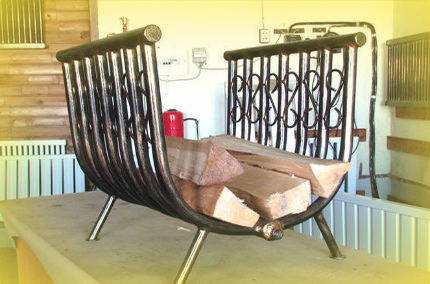
Instead of a horizontally located channel with a coolant in this device there is a tubular heater type of cartridge type with a capacity of more than 50 W per one section.
This heater transfers heat to the aggregate - oil or water, thereby warming the lithium bromide liquid. When installing such models, grounding is necessary.
Device and principle of operation
The difference between vacuum radiators and bimetallic and aluminum analogues can be seen during their external examination. The former have a greater distance between the sections. This heater consists of a housing, a horizontal channel and vertical sections.
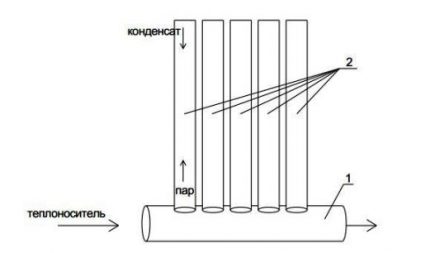
The first of these elements includes two sections made of 1.5 mm steel. A horizontal channel is a primary circuit located at the bottom and connected to a heat source. A coolant passes through it, transferring heat to the liquid located in sections that are perpendicular to this channel.
Vertical sections are filled with a secondary coolant - a heat transformer. They are completely isolated from the primary circuit. Their number is directly proportional to the degree of heating of the room. The rate of fluid heating affects the pressure inside the cavities. The larger it is, the lower the pressure.
The secondary coolant is a liquid based on bromine and lithium. In the circuit, it is in a small volume and has the property of boiling and quickly evaporating at a small temperature of about 35 ° C.
The circuits have good insulation against each other and the environment.
The process taking place in vacuum batteries looks like this:
- Antifreeze or water heats the horizontal channel.
- Heat from the horizontal channel is sent to the vertical sections.
- The heat transformer boils, causing the steam to fill the entire secondary circuit.
- The walls of the secondary circuit heat up and generate heat into the room.
To ensure efficient transfer of thermal rays from lithium bromide liquid to the walls of the radiator, the state of the working substance should be brought as close as possible to the fog stage. Then the heat will be transported by drops of warm liquid.
To achieve this, you must comply with the basic condition - the input in the pipes must have a temperature of at least 40 and a maximum of 60 ° C.
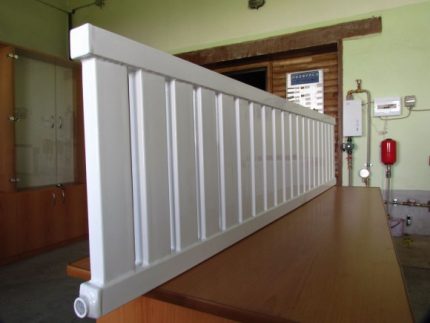
In the case of an autonomous system, achieving such indicators is difficult. In areas of the heating system remote from the source, the coolant will cool off very quickly. Output in application pyrolysis boilers with optimum temperature conditions from 45 to 60 ° C or from 50 to 70 ° C.
In another way, the problem is solved by mounting one mixing unit in front of a group of vacuum radiators. In this case, the low temperature level will ensure the connection of heated water with chilled water from the return. The duty cycle in a vacuum radiator is repeated after the condensate is lowered down the inner walls.
Positive and negative qualities of devices
In favor of the use of radiators that do not contain gases in the cavity, the following arguments are usually given:
- guaranteed absence of such a thing as airing the system;
- low hydraulic resistance;
- complete absence or minimal corrosion;
- stable heat transfer, asdirt does not settle on the inner surface of the case;
- the minimum number of threaded connections, which makes leaks unlikely;
- a wide selection of coolant: antifreeze, water, steam, etc.
If you compare these products and the usual water, then in apartments that are heated centrally, the air will not be heated the same. In the second case, the water entering the system heats the entire radiator body directly. In vacuum, water from the central highway heats only the lower part.
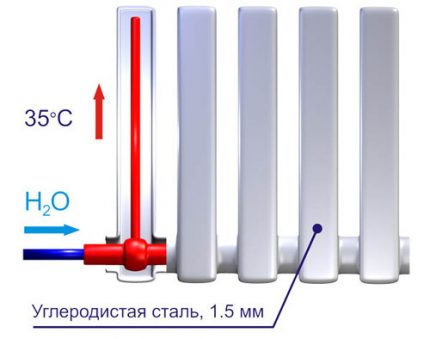
The remaining sections of the battery receive heat from the evaporated liquid. Due to the fact that the heat transformer has both temperature and thermal conductivity lower than that of water, the walls of the vertical sections of the radiator will warm up less.
To ensure the same temperature conditions as in the presence of water batteries, the vacuum radiator should have a large area.
Manufacturers claim that sections of the product warm up instantly. With a small volume of water of 0.5 l, one fragment has a heat transfer of 300 watts. It should be noted here that each section, which has become a classic, of a cast-iron radiator contains 4 liters of liquid.
Savings are especially noticeable when using antifreeze. The cost of its acquisition will decrease significantly. A small amount of coolant, the lack of need for expensive equipment are the main advantages of using vacuum radiators.
The advantage of these devices is the fact that the room warms up more smoothly vertically. According to measurements, for each meter of height the difference is about 0.5 ° C. In a room with a ceiling height of 2.5 m between the appliance and the floor, this will be approximately 1.25 ° C.
The effectiveness of vacuum radiators is manifested when using alternative energy generation resources, such as a heat pump, solar panels.
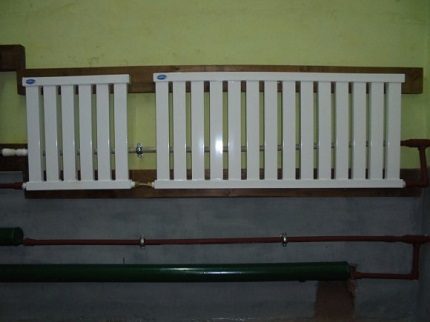
You should know that if a section depressurization occurs due to some circumstances, the vacuum radiator will not work. The reason is that the pressure indicators inside and outside the housing are equal.
Such a breakdown poses a threat to the well-being and health of the people living in the house, because the liquid inside is poisonous.
When is a vacuum radiator beneficial?
Based on the features of a vacuum radiator, we can conclude that its use in a central heating system will not bring special benefits.
Using the appliance is justified when choosing an autonomous heating system. If it is not water that circulates in it, but a non-freezing liquid, then the cost of the coolant will decrease significantly.

Installation of vacuum batteries is a rational solution to the problem if a low-power boiler is purchased. Such a source will not be able to warm the coolant to the high temperature necessary for the operation of traditional devices. In the case of a vacuum unit, this is not required. The reaction inside it will start already at 35 ° C.
Country cottages, which the owners do not use for living constantly, warm up for a long time in the cold. The vacuum radiator will speed up the process. The process of heating with its participation occurs quickly, and the heat is distributed evenly.
Product Selection Rules
With the growing popularity of this high-tech equipment on the market, more and more counterfeit of low quality is found.
When buying, you should check whether the device has the appropriate certificates and other technical documentation.It should be remembered that the main rule of effective operation of the unit is complete tightness.
Important for the radiator and such a parameter as the amount of coolant in the vertical sections - lithium-bromide mixture. A large volume may threaten fluid flow.
To assess the compliance of the volume, you need to focus on the sound that occurs when the unit sways. It should resemble a soft rustle. If the sound of the flowing liquid is clearly distinguishable, the radiator, with a high degree of probability, may turn out to be a makeshift fake.

On products manufactured by factory technology, welding seams do not have any flaws, unlike units of unknown origin.
Manufacturers with a good reputation cover product bodies with high-quality powder paint. Therefore, the integrity of the paint layer is difficult to break even in contact with the solvent. You should not miss such a moment as the tightness of the filling valve.
DIY installation details
Installing a vacuum radiator is not difficult, but in order to do without alterations, you need to learn a few rules. It is necessary to follow the recommendations regarding the placement of the unit relative to the wall, floor, window sill.
At the same time, the distance between the radiator and the wall is at least 50 mm, between the device and the floor - from 20 to 50 mm, the optimal distance to the back of the window sill is 50-100 mm.
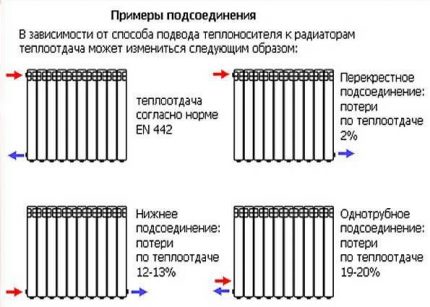
Installation itself is not much different from tapping into the system radiators of other types. The only difference is that the entrance and exit are at the bottom.
Installation of a vacuum unit provides a chain of the following actions:
- The coolant is drained, the old heater is dismantled.
- Mark the installation locations.
- Mount brackets. They are tested for stability, strength.
- Mount ball valves. Through them, the device is connected to the highway. Joints must be sealed with tow or sealant.
- Check the system for leaks.
To improve heat transfer, a foil sheet can be placed on the wall behind the radiator. If you have previously made thermal insulation, you will have to increase the length of the brackets by an amount equal to the thickness of the thermal insulation layer. If the house is insulated, the efficiency of the heating system will increase.
The best manufacturers of vacuum radiators
A wide range of vacuum heaters on the market is not yet different. Among consumers, products of the company enjoy special authority. Energyco. This Russian manufacturer uses 1.5 mm steel for the manufacture of batteries. Users note high-quality performance, good heat dissipation - about 170 kW per element.
The working pressure for the radiator is from 0.6 to 1.3 MPa. Even at 2 MPa, the device can work, but 5 MPa is a lot for it - it begins to collapse. The cost of the radiator from EnergyEko is considerable, but the demand for it does not fall.
Manufacturer Forevacuum produces vacuum devices of wall and baseboard type. The heat transfer of a register 1 m long at a coolant temperature of 50 ° C is 239 W.
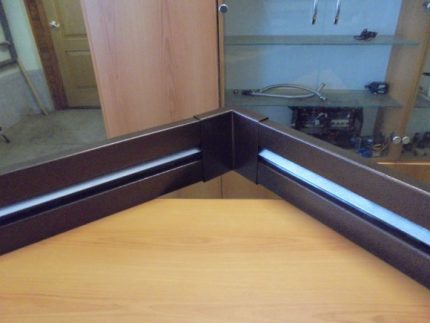
You can also find Chinese-made radiators on the market. They will have a lower price, but sometimes of dubious quality. When you purchase them, you should carefully inspect, check the documentation.
Conclusions and useful video on the topic
Acquaintance with the design of the vacuum device and the principle of its operation:
Some craftsmen create vacuum batteries with their own hands:
There are conflicting opinions regarding the advisability of using vacuum radiators. But in some cases, this heating method can be very effective. The main thing is to make sure when buying their excellent quality and complete safety.
Have questions, find bugs or would like to supplement this material with your own opinion about vacuum heating radiators? Please leave your comments in the contact block located under the article.

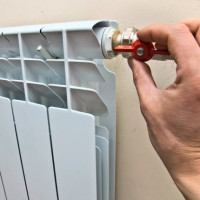 Aluminum heating radiators: overview of technical characteristics + installation principles
Aluminum heating radiators: overview of technical characteristics + installation principles 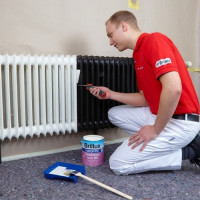 What paint to paint heating radiators: a comparative overview of the types of paint for batteries + the best manufacturers
What paint to paint heating radiators: a comparative overview of the types of paint for batteries + the best manufacturers 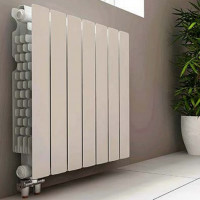 How to choose heating radiators for an apartment and a private house: selection criteria and advice to customers
How to choose heating radiators for an apartment and a private house: selection criteria and advice to customers  Vertical heating radiators: types + advantages and disadvantages + brand overview
Vertical heating radiators: types + advantages and disadvantages + brand overview 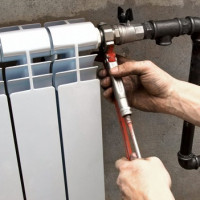 Installing heating batteries: do-it-yourself technology for the correct installation of radiators
Installing heating batteries: do-it-yourself technology for the correct installation of radiators  How much does it cost to connect gas to a private house: the price of organizing gas supply
How much does it cost to connect gas to a private house: the price of organizing gas supply  The best washing machines with dryer: model rating and customer tips
The best washing machines with dryer: model rating and customer tips  What is the color temperature of light and the nuances of choosing the temperature of the lamps to suit your needs
What is the color temperature of light and the nuances of choosing the temperature of the lamps to suit your needs  Replacement of a geyser in an apartment: replacement paperwork + basic norms and requirements
Replacement of a geyser in an apartment: replacement paperwork + basic norms and requirements
A month ago, vacuum radiators were installed. For the first time there was such an experience. Very, of course, an interesting idea, but does not justify itself, as for me. And yes, for a private house or apartment with independent heating, these radiators can be ideally suited with the right approach. But where there is a centralized heating system - it will only be harmful to oneself. Maybe I'm wrong, but this is the impression.
We installed vacuum radiators in our home. They heat up faster, give off heat better, and therefore are more economical. Modern technology is moving forward, we must use it! Outwardly, ours are no different from old appliances, although when they bought, they saw quite interesting models, which, of course, are more expensive, but if it is very important to fit into the design picture, you can find such options.
Honestly, I first learned about vacuum radiators and did not quite understand how critical the difference in costs was in the long run. My bimetal is installed in my house. Heats up and cools quite quickly too. The entire radiator is filled with water (coolant).
If I put a vacuum, then the water will go only along the bottom of the radiator. But how significant is the benefit? Will less water be consumed? Well, she’s not so expensive. It would be nice to get some figures at least approximate about the consumption of water and gas with the same area.
Hello. Your skepticism is justified. In one section of the vacuum radiator contains only 50 ml of coolant. For some reason, the manufacturers took this as a chip and say that now you can warm the house faster, since a small amount of coolant will warm up several times faster and will be activated already at 30-35 degrees of heating, which, of course, is complete nonsense.
In general, the effectiveness and efficiency of vacuum radiators is a huge question and has been repeatedly refuted by experts. As well as their safety, the lithium bromide mixture is poison.